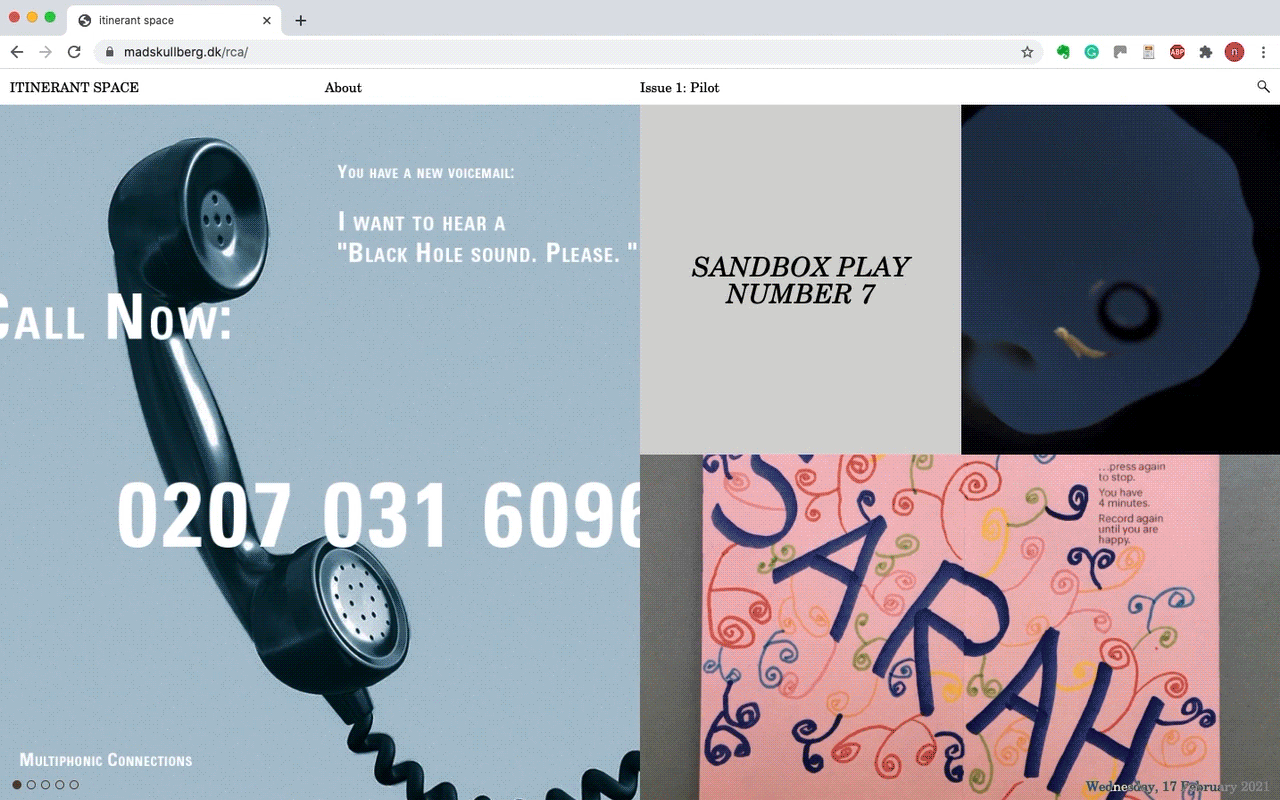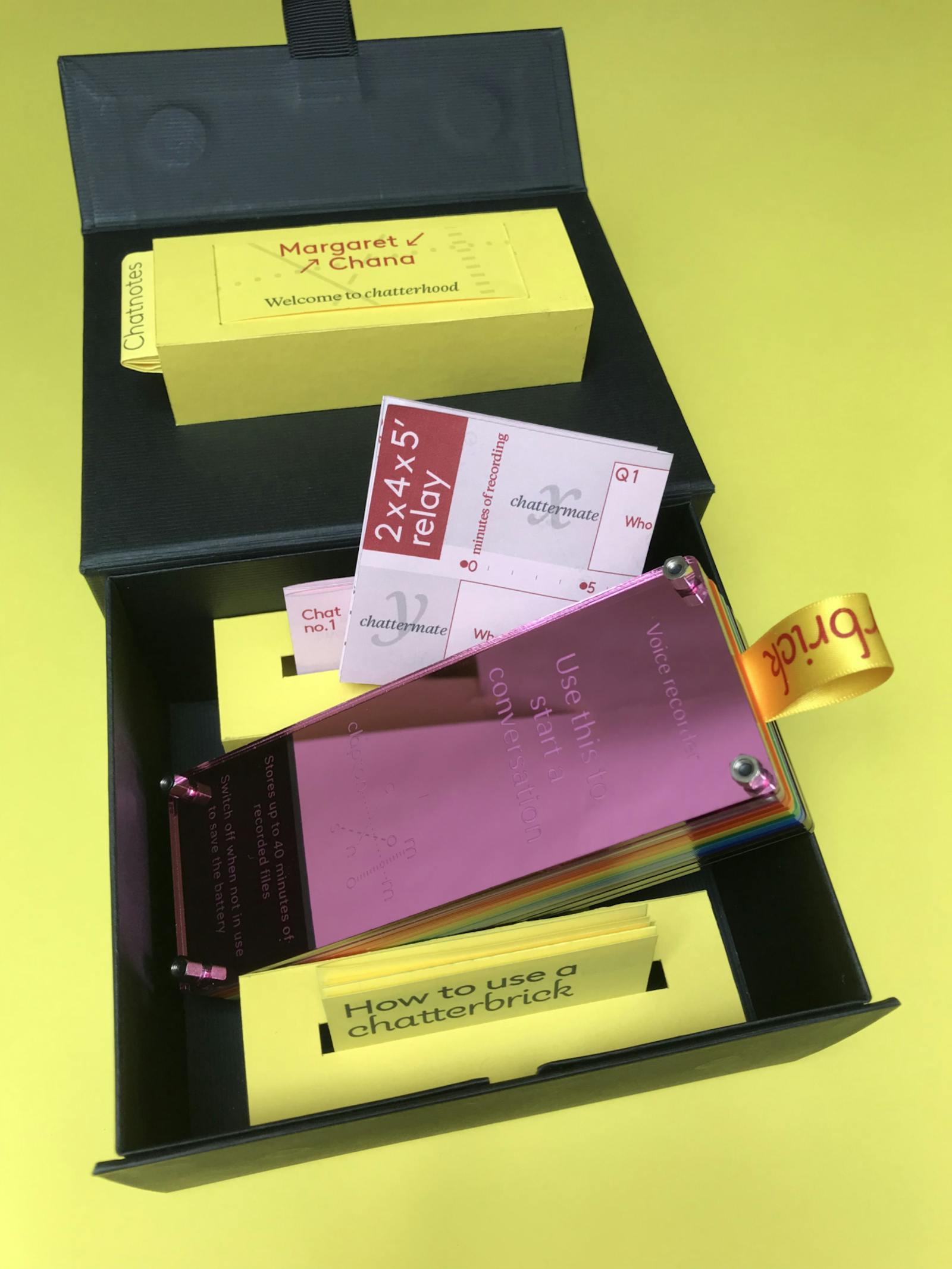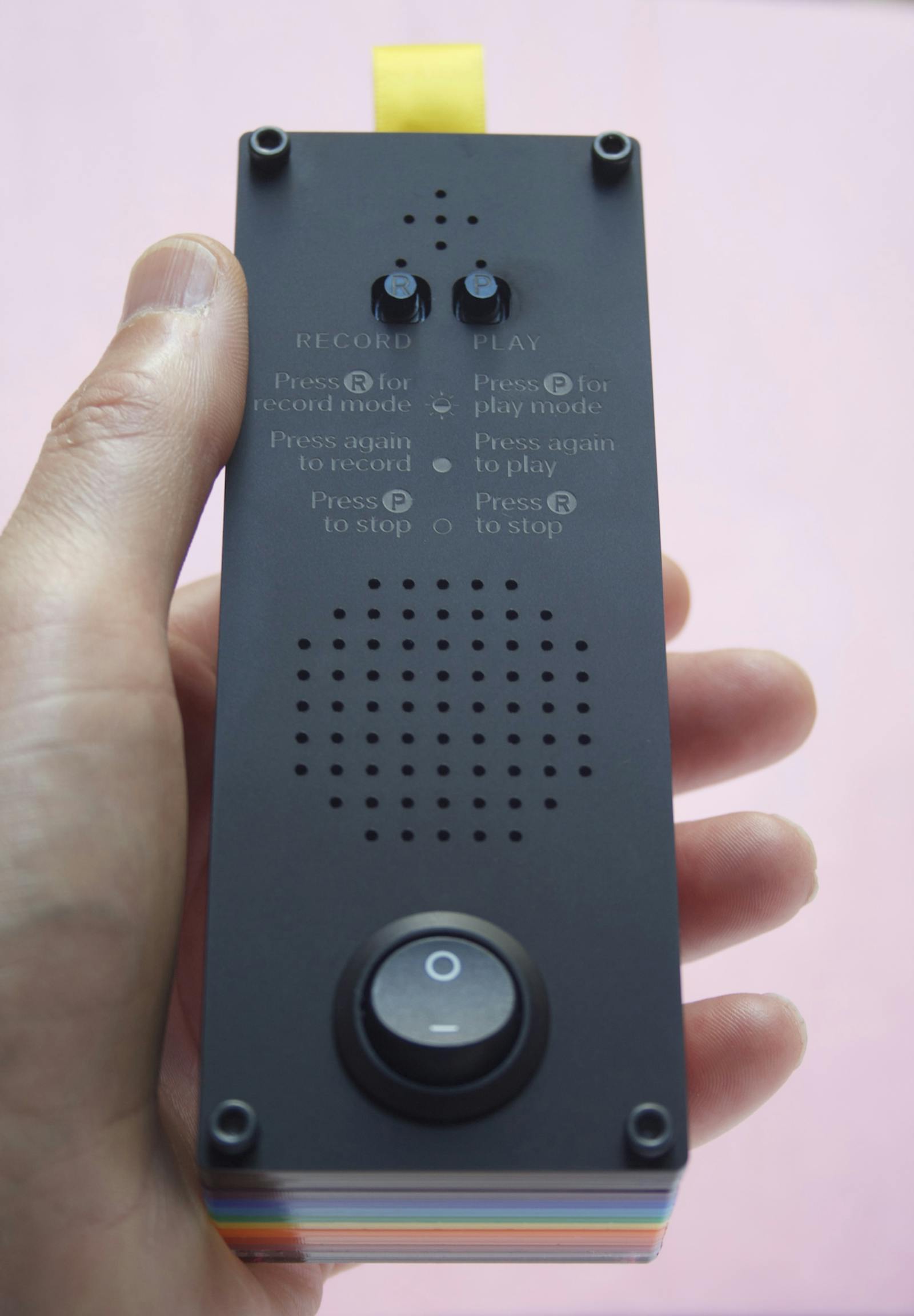Nick Bell
Chatterhood: intercultural communication between neighbours who may never meet.
ABSTRACT
Participatory research methods enable designers to work situated within neighbourhoods alongside residents as co-researchers cultivating conditions for change.
Residents facing barriers to participation in neighbourhood social assets are absent voices constituting expertise depoliticised participatory approaches lack and can misrepresent.
My practice-led study argues for and prototypes a participatory action research (PAR) method that widens access to this expertise.
It does this by relaxing the shared tacit assumption that it is best if participants take part in participatory research activity in physical proximity with other participants, face-to-face.
Instead, this method – inspired by the pandemic – creates a physically contactless yet engaging kind of proximity that makes cross-community and intercultural exchange safer, more secure, and playful.
Facilitation via layers of community gatekeepers – alleviating imbalances of power – provide familiar faces supporting participant pairs to engage in dialogic relays of voice recorded messages without having to meet.
The inclusive longitudinal design of this PAR method infrastructures an enabling ecosystem through which connection, understanding and healing can be nurtured across heterogeneous neighbourhoods.
I test this PAR method for inclusivity via application in an ongoing series of theory-practice relays exploring situated interactions between residents of a North London neighbourhood. I work alongside Clapton Commons, a charity and open network for neighbours, in concert with local community groups. In the main case study, cultural probes are handed out inviting neighbours into contactless connection with neighbours unlike them. Ten to twenty pairs of neighbours, each pair bridging two communities in Upper Clapton. The probes are audio probes – voice recorders – a custom-designed, easy, safe and fun-to-use portable, handheld channel of communication called chatterhood that does not require physical presence, a phone, the internet or mains power to use.
Participants learn that their contributions need not be voiced in-person amid the buzz of face-to-face events. They are free to gather themselves towards making recordings at their own pace, in their own style; listen to received recordings in their own space, and at a time of their own choosing. In chatterhood, listening and speaking weigh the same.
Disruption to relational mechanisms wrought by the pandemic playing out in a climate of extreme political polarisation, adds to the urgency of this work.
ITINERANT SPACE
I am a founding editor of itinerant space, an experimental online platform for doctoral researchers, based in the School of Communication, RCA. The academic journal seeks to push at the boundaries of academic publishing and support the research practices of PGRs at RCA.
itinerant space is launching its first “Open Call” for the next issue at a peer review workshop it is facilitating at the Research Biennale on Saturday 24 June at 3:15pm. Book now.
The intent of the workshop is to explore the pedagogical value of peer review processes and to critically engage with what this means for researchers in academic publishing. Led by the journal’s editors and SoC researchers, we invite you to join us in conversation and apply to become a member of our peer review panel.

itinerant space – an online experimental platform for PGRs at RCA.

Message relay guide for Chat No. 1. 8-page concertina booklet (front and back). 67 x 67 mm. Message relay guides accompany every chatterbrick in each chatterbox. A participant could dominate discussion on a chatterbrick just like they might dominate a discussion in a room. The design of support material prompts participants to share the speaking and listening evenly between them across the 40-minute recording capacity of each chatterbrick.


Chatterbox
With lid open showing yellow box interior void-fill with slots that house:
- one chatterbrick voice recorder
- How-to instruction booklet
- message guide relay booklet
- chat prompt booklet
- If found return details
- 'Welcome to chatterhood' nameplate
- chatnotes sheet

Chatterbrick
Top side showing Record and Play buttons, on/off switch, perforations for the microphone and speaker. Each chatterbrick is a bolted stack of laser-cut perspex sheets.
